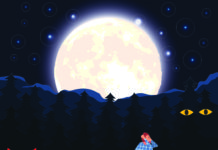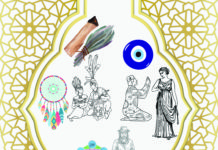31,951
31,951 is the recorded death toll of prisoners who were in the Dachau concentration camp in Dachau, Germany.
This high amount of death that came at the hands of Dachau’s concentration camp and is a mere fraction of what other camps, such as Auschwitz, recorded. The Auschwitz camp killed approximately 1.1 million people.

Dachau’s kill count barely surpasses 3 percent of the people killed in Auschwitz. And with twenty main concentration camps active in Nazi Germany during the time of the Holocaust, the levels of death that plagued the country were alarmingly high.
Yet, when I found myself standing at the gates of Dachau, what hit me wasn’t the amount of people killed at the camp, it was why they were killed.
The rusty gates of the concentration camp read “ARBEIT MACHT FREI”, which roughly translates from German to “work sets you free”. The phrase wasn’t much of a warm welcome either, as it was simply propaganda used to manipulate incoming prisoners.
Upon entering through the worn gates, I found the camp to be desolate. The ground was primarily made up of gravel and a few barracks (where prisoners were kept) uniformly lined up through the middle of the camp; all of which were surrounded by guard towers.
It was when I entered the barracks that I felt as if I was taken back to the mid-20th century where so much human suffering had occurred on the very floor I was walking on. Decades after the camp had been shut down, the eerie presence of death seemed to loom around every corner. I sat on a bench, letting my imagination run wild.

I could hear people breaking the single piece of bread they got every day to ration with four or five other people. I could hear the starving cries of babies echoing through the barracks. I could hear the exhausted moaning, or the terrified weeping of mothers comforting their frightened children.
I could see the crowded barracks, saturated with malnourished prisoners, all of which were covered in a layer of grime. I could see the hollowed faces, the hazy eyes, the absence of hope in the peoples’ hearts.
And I could feel my own heart ache for those who suffered at the hands of the Dachau camp. As I toured the area, I found myself wondering why?
Why were so many humans sentenced to a slow death for no reason? Why were so many starved? Why were so many innocent lives taken? Why didn’t anyone speak out? Why did this ever have to happen?
The prisoners who were killed in Dachau primarily consisted of Jews, homosexuals and priests who spoke out against the Nazi regime in
Germany had struggled to recover from the economic strains of World War I. Desperate to escape the depression, Adolf Hitler gave them hope by creating scapegoats for the Germans to blame for their own woes. Many of these scapegoats were Jews, homosexuals and anyone who
Amongst an angry, economically depleted and desperate German populace, selling the idea that an entire group of people
The result? Millions of innocent lives taken in a fairly short period of time.
As I continued venturing through barracks, through the firing range (used on real people) and into the guard towers, I realized that there was something that frightened me more than any type of death statistic ever could:
The feeling that society wasn’t far from doing the same thing again.
Maybe not a second holocaust, but the fact that people’s mindsets hadn’t evolved much was what I found frightening. Around the world, theres no shortage of similar circumstances that mimick the actions of the Nazi regime.
In Brunei, Sharia Law had been put in place which would make homosexuality punishable by stoning to death. In China, “re-education camps” for Muslims were established. Or even in the U.S., people are quick to blame outsiders such as Syrian immigrants from the east to hispanic immigrants from the south for their own woes.
The idea that an “outsider” is coming invokes fear. It implies that someone is coming to invade, which is an unnerving feeling for most everybody. It is reminiscent of space aliens (hence the term ‘illegal alien’). And Adolf Hitler was very aware of this, as he used the term Ausländer (meaning outsider or alien) to describe anyone but the German Aryan.
Fear is a great motivator, as it creates a sense of hysteria amongst the general populace, which ultimately clouds judgment and allows for groups to be blamed, extermination camps to be set up and walls to be built.
The concentration camp was proof that blaming an entire group (whether that be an ethnic, religious, or sexuality group) for a society’s problems never solved the issue, and ultimately, would take society to more sinister places.
In Nazi Germany’s case, that sinister place was the numerous concentration camps that killed millions.
Although my tour of Dachau was just shy of three hours, the feeling that the extermination camp had placed on me never subsided.
Having an “us versus them” mentality can be a very dangerous ideology. Whether a society blames another group based on their religion, sexuality, or race, the concentration camp illustrated the horrific ramifications that usually accompany the escalation of the mentality. The reason is that far too much innocence is caught in the crossfire.
As another U.S. presidential election approaches, divisiveness will surely arise. And with that inevitable time of divisiveness, CMU students (and all people really), should look past borders, religions, and sexualities.
Through kinder eyes, attrocities such as the holocaust will simply become a thing of the past.




